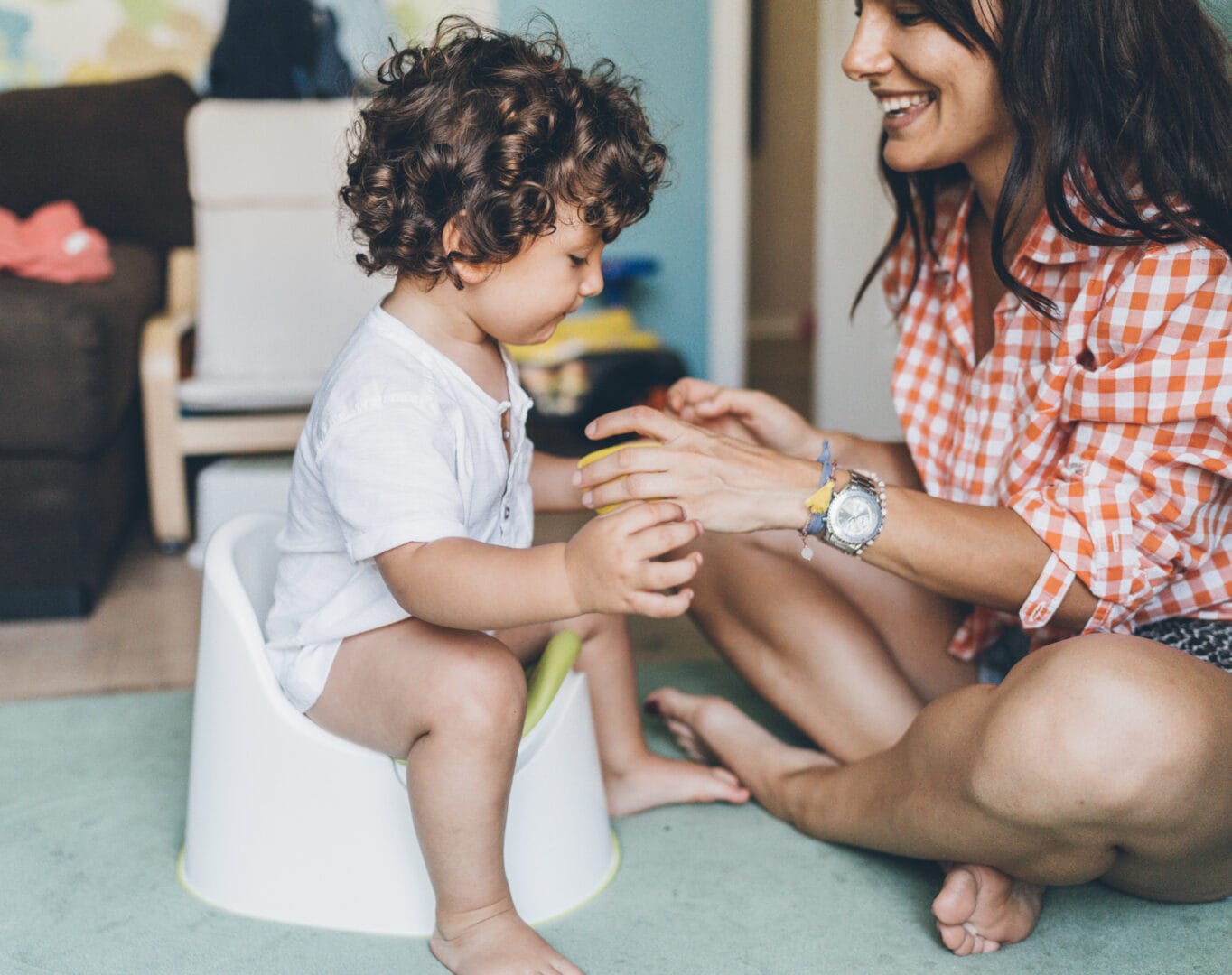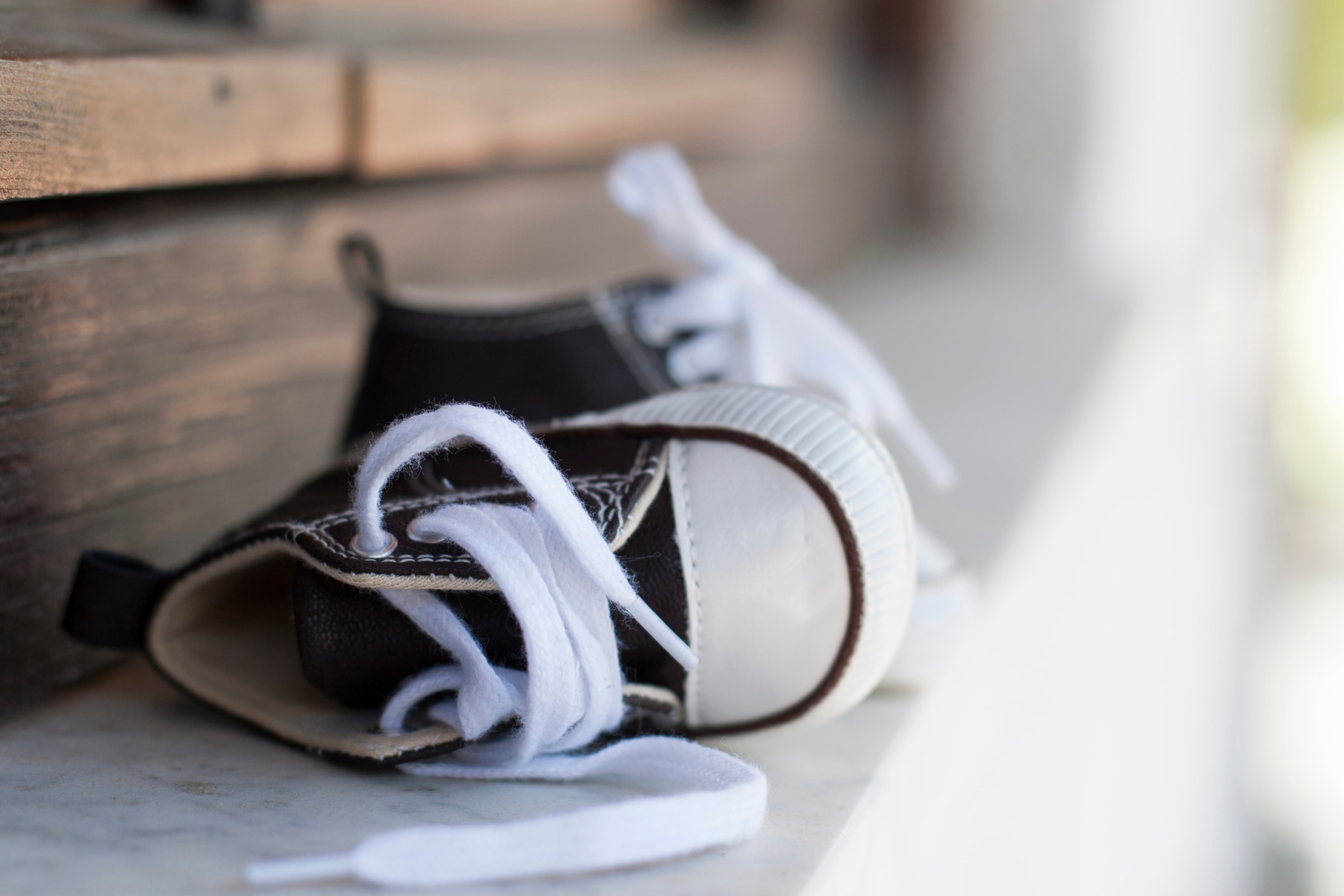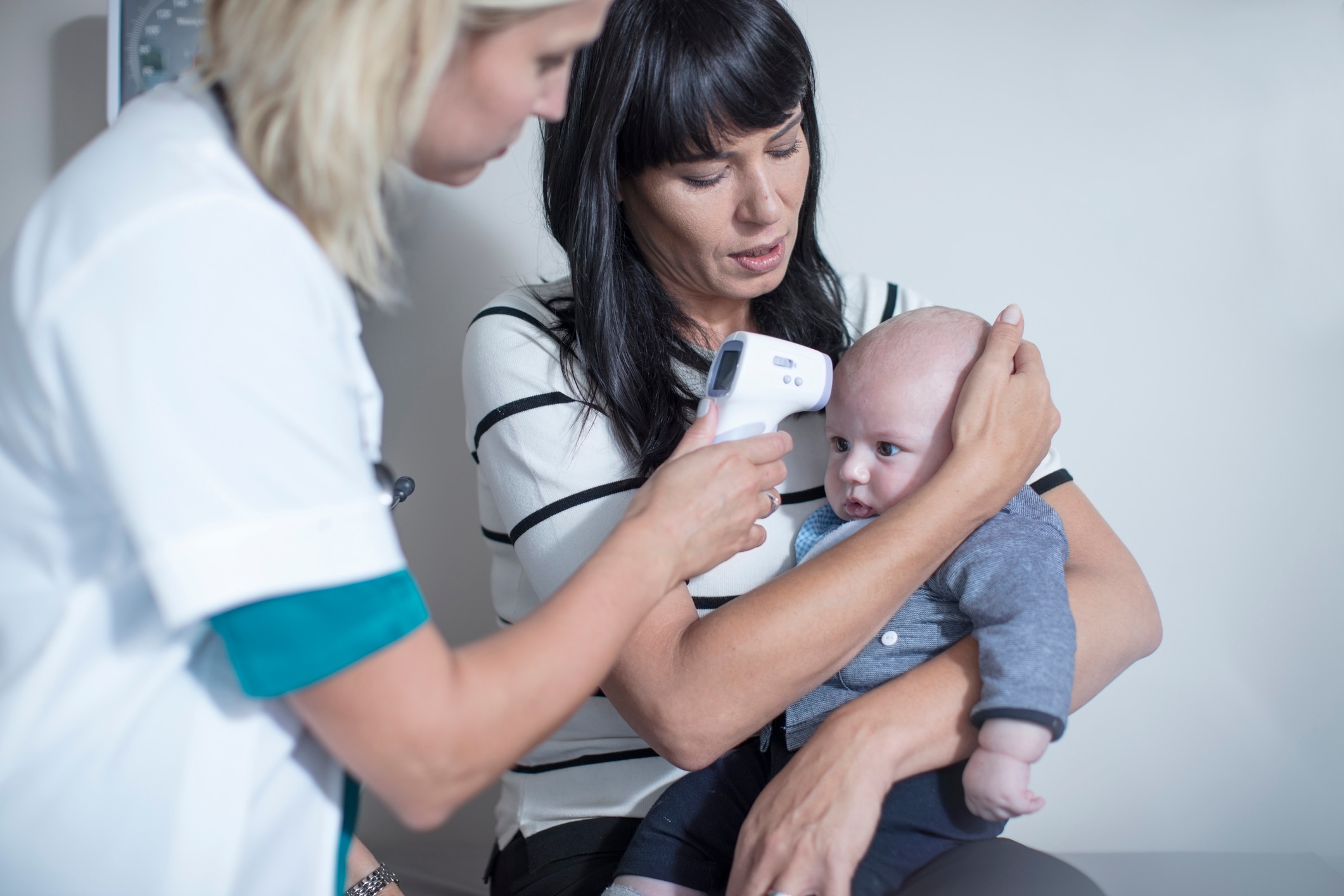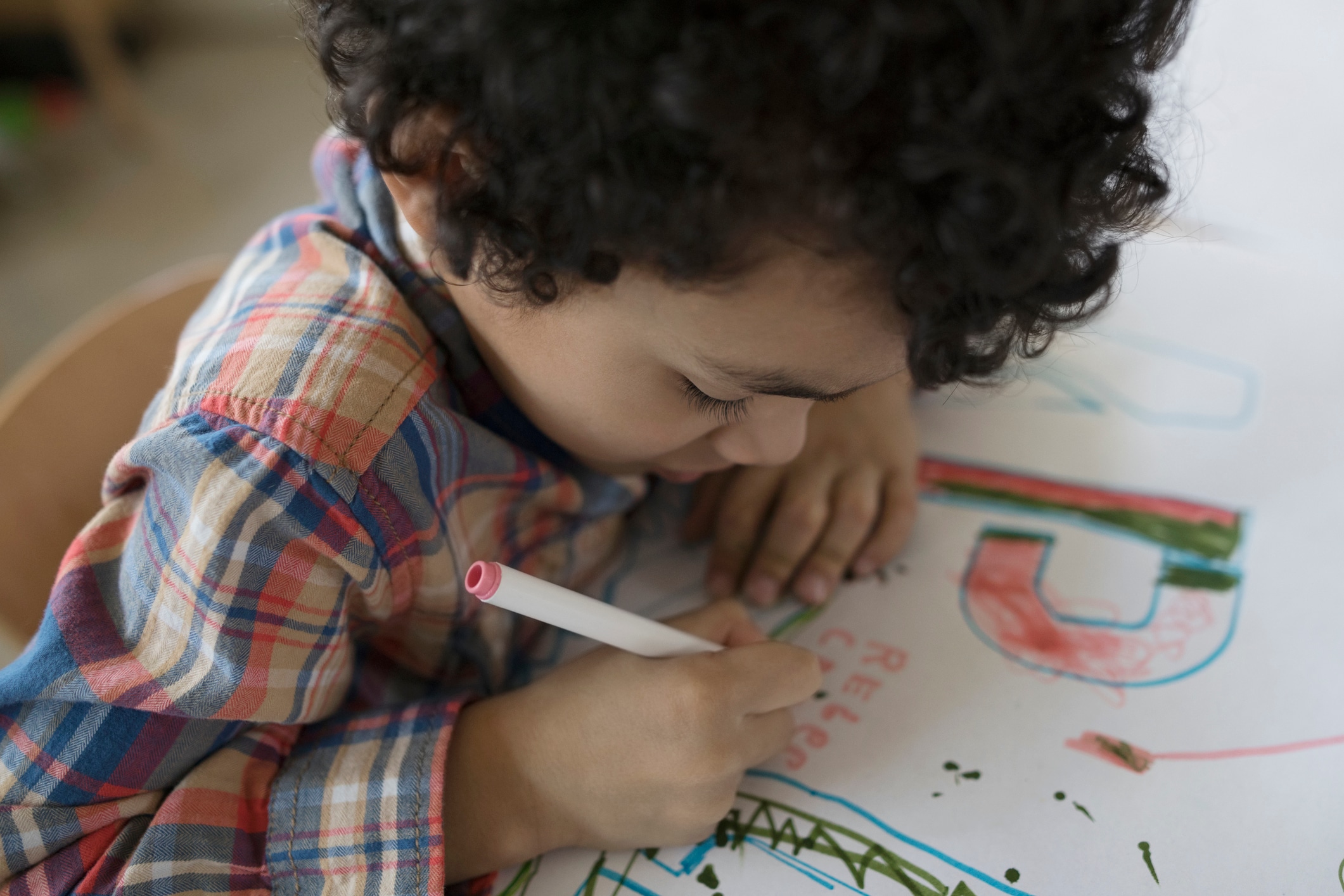In this article
- When to start potty training your child
- How to prepare for potty training
- How often to remind your toddler to try and use the toilet
- How to create a routine that will set the stage for success
- How to use rewards and praise effectively
- How to address potty training fears — and make it fun
- The main takeaway for successful potty training
Imagine potty training from a toddler’s perspective. You’ve started to learn words and phrases, made it through the more painful parts of teething and spend meal time getting most foods into your mouth — the ones you enjoy, anyway.
Just as you think you’re getting the hang of things, a miniature version of a toilet appears in your bathroom, and your parents start trying to get you to use it. And when you don’t, you can tell they get upset — which makes you want to avoid the bathroom altogether.
“Don’t take the process too seriously as children pick up on those stressors,” advises Dr. Emily Wolfe, a pediatrician at Orlando Health Physician Associates in Orlando, Florida.
While the journey looks different for every child, there are a few expert and parent-backed potty training tips that can boost your little one’s bathroom success.
When to start potty training your child
Knowing when to start potty training can be tricky. Because children grow and develop at different paces, recommendations on potty training from the American Academy of Pediatrics (AAP) favor looking for signs of readiness over focusing on a specific age.
If you’re still looking for a general time frame, Wolfe says that while each child is unique, most kids are unlikely to be ready to start potty training prior to 18 months of age. “The ability to feel when a void or stool is about to happen usually occurs at 12-18 months,” explains Wolfe.
In addition to being able to recognize when they need to go to the bathroom, Wolfe says children also need to have the physical ability to get to the potty and be able to remove their clothes before potty training commences.
“My first toddler decided she wanted to walk around the house naked. Instead of insisting she wear clothes, I just told her to let me know when she had to pee. Two weeks later, she was potty trained.”
— CAROLYN TRUETT, A SOUTH CAROLINA MOM OF THREE
If chasing your child around the house after they’ve removed their dirty diaper starts to become a trend in your home, Dr. Ashanti Woods, a pediatrician at Mercy Medical Center in Baltimore says this can be an indicator that your child is ready to start potty training. “Grabbing their diaper, heading to the potty, taking their diaper off after they have soiled it and/or use language like ‘pee pee’ and ‘poop’ are signs to look out for,” he says.
Carolyn Truett, founder of Caramel and Cashews and mom of three based in Greenville, South Carolina actually used her daughter’s affinity for walking around without a diaper (or any clothes) to her advantage. “My first toddler decided she wanted to walk around the house naked and instead of insisting she wear clothes, I just told her to let me know when she had to pee,” says Truett. “Two weeks later, she was potty trained.”
How to prepare for potty training
Preparation for potty training goes beyond considerations for your toddler — it also means preparing yourself for the process. No matter how long it takes.
“Potty training varies from child to child,” says Woods. “It may take just a couple of weeks, but for many children it takes several months.” According to Woods, the average time it takes to potty train a child is around three to six months.
A couple othe tips to consider when preparing for potty training:
Get your child involved in choosing a potty.
“It is always a good idea to involve your child in the process to help them understand that it is theirs,” says Wolfe.
Once you’ve purchased a potty (or several) with your child’s input, spend time with them on and around the potty to get them comfortable with it. Wolfe suggests spending time playing with it, sitting on it and surrounding it with familiar things to create a welcoming environment.
Make sure toilets are accessible in each bathroom in your home.
“Have a small potty for the child to physically sit on or potty training seat on all of the toilets in the home,” says Woods. “Parents can also get some stickers and create a chart with days of the week that the child can use as a reward system.”
How often to remind your toddler to try and use the toilet
Woods suggests keeping track of what time of day your child typically fills their diaper, then use this information to determine when you’ll take them to the toilet.
When your child becomes comfortable with their new toilet, try bringing them to the bathroom during times when they usually poop or pee. “If your child typically fills their diaper one hour after they have eaten or drank liquids, start sitting them on the potty at the 30-45 minute mark,” Woods suggests. “Similarly, if your child has a poop each early evening, that would be a great time to place him or her on the potty.”
How to create a routine that will set the stage for success
As with any type of training, consistency is key, as kids thrive on routine, says Woods. “Consistency means that parents will need to be on the same page as their day care provider, as the grandparents or anyone else who cares for the child,” he explains. “If the parents are doing potty training routines while everyone else is doing diapers, the child may get confused and the process will likely take longer.”
If the idea of always needing to be near a toilet when taking your toddler anywhere seems daunting, consider this advice from Lauren Tingley, an elementary school teacher and mother of two: “Keep a potty seat in the back of your car and place a diaper in the bottom of the potty seat to make clean up a breeze,” she says. “You’ll be amazed at how much faster your child will be potty trained when you are consistent and they always have the opportunity to go when they need to.”
A few additional consistency tips from Wolfe:
- Keep expectations and goals as simple and clear as possible and communicate them frequently.
- Keep the location of the potty and the routine of using the potty consistent with the same sequential actions.
- Keep praise and positive rewards consistent and encouragement for mistakes consistent.
“A reward can be anything from stickers to a piece of fruit or an extra book at bedtime.”
— DR. EMILY WOLFE, A PEDIATRICIAN AT ORLANDO HEALTH PHYSICIANS ASSOCIATES
How to use rewards and praise effectively
Whether your child has used the potty for the first or 50th time, Wolfe stresses the importance of providing consistent praise and rewards to encourage the behavior. “Each time the child uses the potty or takes additional steps towards using the potty, provide a positive reinforcement for them,” says Wolfe. “This can include hugs, verbal praise, tangible rewards or fun activities.”
Not sure what to provide as a reward? Woods suggests getting creative and tapping into your child’s interests. “A reward can be anything from stickers to a piece of fruit or an extra book at bedtime,” he notes. “It could be a trinket from the dollar store or an old toy that got lost in the abyss that you found.”
Potty training can be frustrating for parents — especially if the weeks drag on without much progress. However, Woods advises against punishing kids who don’t follow potty training instructions. “Being as supportive and fun as possible is very important,” he says, pointing out that modeling the behavior you want them to emulate can help as well. “We encourage parents to try using the bathroom with their child,” he says.
How to address potty training fears — and make it fun
Using a toilet for the first time comes with new feelings, sensations and fears. It’s important to listen and understand your child’s concerns and hesitations when it comes to using the toilet and provide reassurance throughout the process.
A few common fears that may arise, according to Woods:
- Fear of falling into the toilet. If you’re using a special seat on your toilet, your child may feel afraid of falling in. If this fears arises, reassure your child that they are safe, that you are right there with them and that nothing bad will happen, recommends Wolfe.
- Fear of constipation. The sensation of pushing out stool is one that your child has done without giving much thought to it. This new process of sitting on the toilet and getting in touch with those feelings may be overwhelming — especially if your child is having trouble passing stool. To address constipation, ensure your little one has a high fiber diet and encourage plenty of fluid intake.
And to keep potty training fun, Wolfe suggests making the environment a welcoming one. Allowing your child to decorate their new toilet and surrounding it with familiar toys can help alleviate fears and make potty training more enjoyable.
Crystal King, founder of Amazing Baby and a single mom by choice of two toddlers, found potty training success with her son by implementing the “aim game.” “If you’re teaching your son to stand up to go potty, throw some cheerios into the toilet bowl,” she says. “Ask your son to aim for them. Over time, he will master hitting the targets (which means less clean-up for you around the toilet bowl).”
The main takeaway for successful potty training
As much as possible, do your best to enjoy the potty training process and your child will, too. Anticipate setbacks and try not to have expectations regarding the amount of time it’ll take, or compare your child to others who mastered potty training sooner. Every child is different, and some may take longer than others. Before you know it, potty training will be a distant memory — one you’ll hopefully look back on and laugh about.





